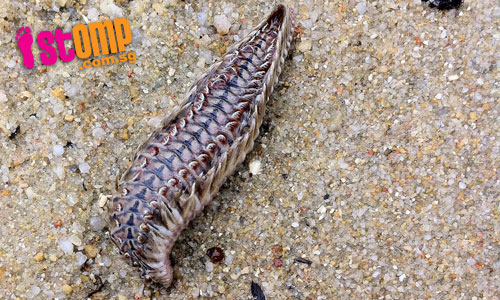
STOMPer J found a weird looking creature on Pasir Ris Beach, which looked like a worm.
Said the STOMPer:
"Our family was playing at Pasir Ris Beach when this creature was accidentally dug up.
"It had several legs on its upper side and a pink belly.
"It moved very slowly on the sand, but when we poured water over it, it slithered away like a water snake!
"It looks scary indeed."
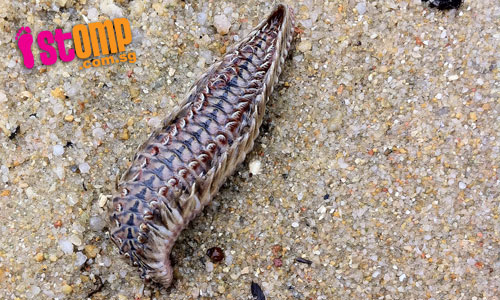
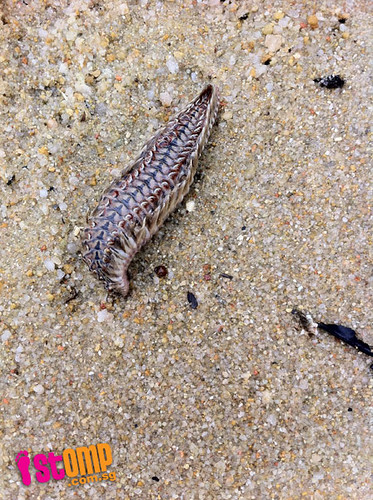
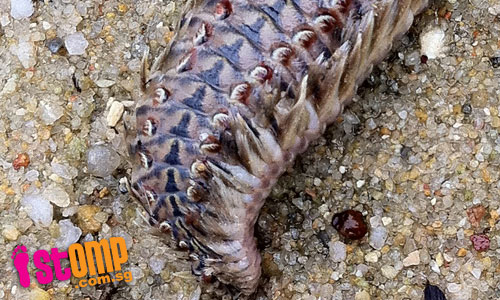
This bizarre-looking creature is actually 'just' a fireworm (Chloeia sp.), a marine polychaete that's actually quite commonly encountered and abundant on many of our northern shores, such as on Changi and in this case, Pasir Ris.
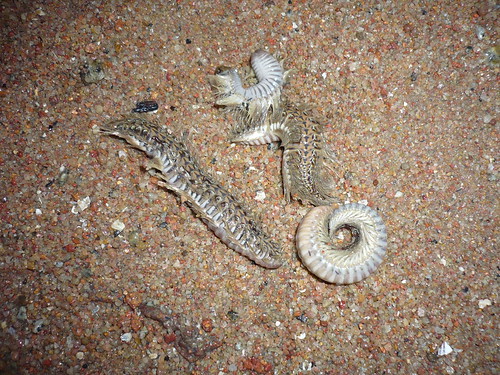
Changi;
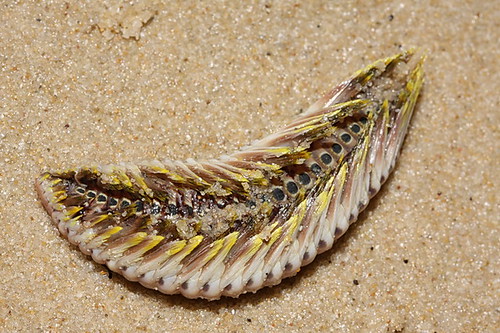
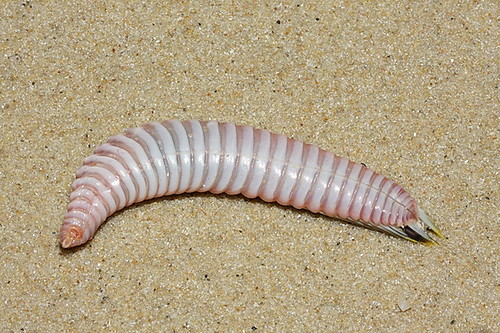
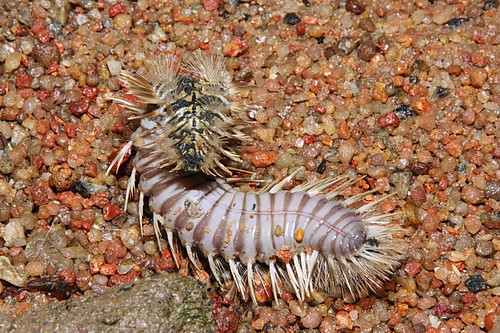
Changi;
(Photos by James)
I'm usually quite fearless, but I have to admit that the way they squirm about when stranded on land does make me shudder.
In the water, however, they transform into beautiful, otherworldly beings.
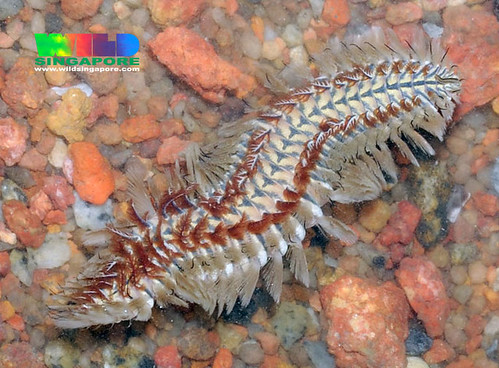
Changi;
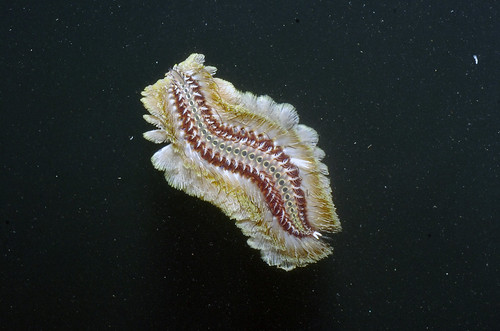
Raffles Marina;
(Photos by Ria)
Fireworms are predators, feeding on sessile organisms like coral polyps and sea anemones, and will also scavenge on carrion, which is why they are sometimes caught by anglers on baited hooks.
Labrador Park;
(Video by Andy)
Those fine setae, or 'hairs', which make them look so much like the fuzzy caterpillars of various moths and butterflies, are actually what give them the name of fireworm. Each bristle is a pointed hollow tube, and might also have barbs. They are brittle, break off easily, and can become embedded in the skin, leading to severe itching, inflammation, and rashes. This is analogous to the urticating bristles found in hairy caterpillars and various tarantulas, and stinging plants such as nettles. I was foolish and unfortunate enough to get an idea as to what would happen if one were to touch these setae; suffice to say that it was a very unpleasant experience, and I was already protected from the worst of the stinging by gloves. Well, at least it's only skin irritation from foreign bodies and not due to any venomous secretions (though it is mentioned here that toxins are involved).
Interestingly enough, infusion of tongkat ali (Eurycoma longifolia) is said to be effective in providing relief from wounds caused by contact with fireworms.